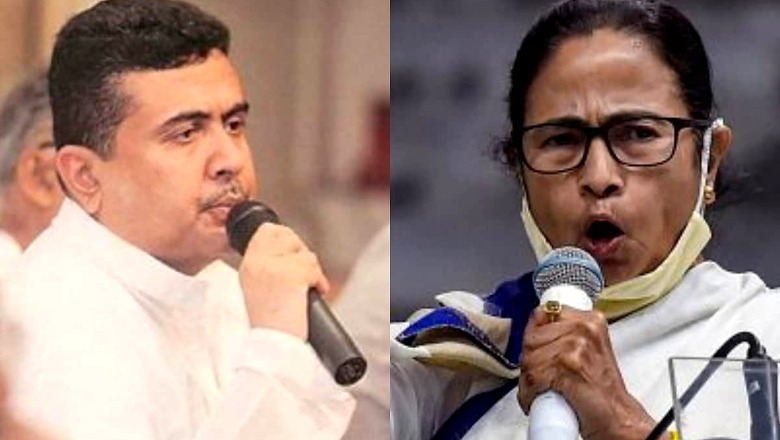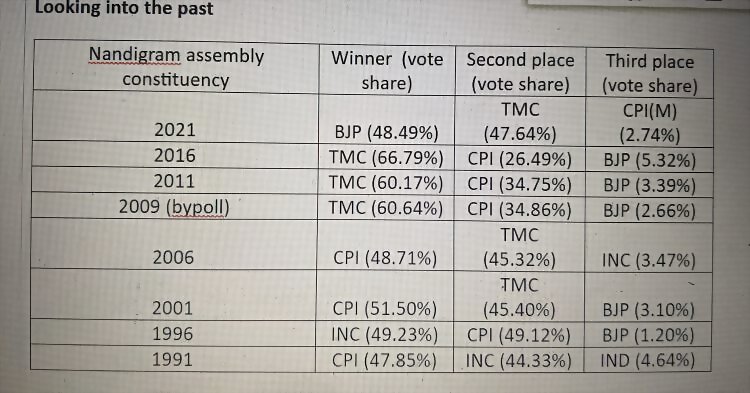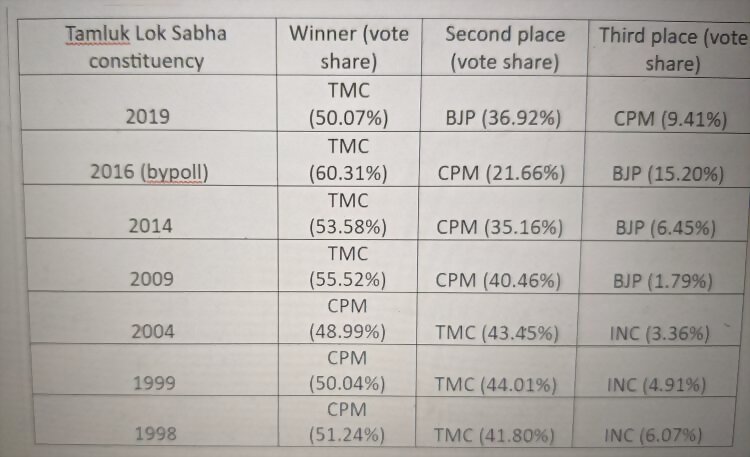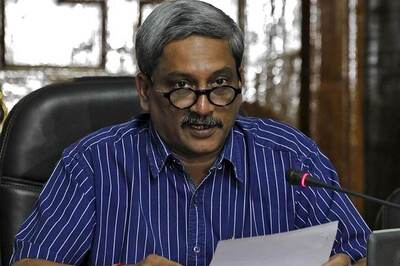
views
Was Suvendu Adkhikari a prize catch for the Bharatiya Janata Party in West Bengal? He proved his mettle when he defeated Mamata Banerjee in the Nandigram assembly seat, but his influence was limited to a certain area only in his home district of Purba Medinipur.
For the BJP, in a way, he proved to be another Smriti Irani. Like Smriti Irani was a giant killer when she defeated Rahul Gandhi in his Lok Sabha constituency Amethi in Uttar Pradesh, which was also his family bastion, in the 2019 Lok Sabha elections, Suvendu, too, defeated Mamata Banerjee in a constituency that is seen as synonymous with her rise in politics.
But he failed to be a winner in the four districts, nine Lok Sabha constituencies and 52 assembly seats that were being seen as an area of influence of the Adkhikari family, including Suvendu’s father Sisir Adhikari and brother Dibyendu Adhikari, both Lok Sabha MPs.
Or, to sum it up, he failed to start the script that would end with Mamata’s political career as Mamata’s rivals had expected.
While Mamata Banerjee lost from Nandigram after giving a good fight and was defeated by less than two thousand votes, she once again proved why she is currently the only larger-than-life figure in West Bengal politics.

It seems Mamata Banerjee has been able to win three successive terms based on her pro-incumbency working style, as reflects from the data in the table above. She has won every assembly election with more seats and a greater vote share percentage. That can only happen when a politician has mass appeal across the state.
The Suvendu factor could not help the BJP perform well enough even in his home district Purba Medinipur. Of the 16 assembly seats here, the TMC won more than the BJP, grabbing nine. In three other districts where the Suvendu factor was said to be having an influence— Bankura, Purulia, and Paschim Medinipur— the TMC won 21 seats against the BJP’s 15.
True, the BJP did gain in these four districts, winning 21 more seats than in the 2016 assembly polls, while the TMC lost 10 seats. But that can also be attributed to the BJP’s growing influence in these areas. The party got 37% votes in the Tamluk Lok Sabha constituency and Nandigram is a part of it.

If we see the vote share reflection here, it is a clear indication of Mamata’s visibility in her pre and post Singur and Nandigram avatars. Assembly elections from 1991 to 2006 in the assembly constituency saw a minor difference of vote share between the winner and the runner-up. But after the 2007 violence in Nandigram over land acquisition that put Mamata’s political career on a higher pedestal, the constituency saw a huge difference between the winner and runner-up votes, over 25% in 2009 and 2011 and over 40% in 2016.
Mamata’s critics called it the Suvendu effect, adding that Suvendu was, in fact, the real Nandigram hero. But then what happened in the 2021 assembly polls? Can the Suvendu factor explain why the 40% vote share difference in 2016 reduced to just 0.85% in 2021 when Suvendu’s mentor Mamata was directly pitted against him in the fight?
Also, if we see the large picture here, the ripple effect of the Nandigram vote difference until 2016 goes well beyond the Suvendu catchment area.
It was, in fact, a Mamata wave all along in West Bengal following the Singur and Nandigram anti-land acquisition movements and was not just limited to the catchment area of Suvendu Adkhikari and his family.
It becomes clear when we see the election results onwards of Mamata’s 25-day fast during the Singur row and the Nandigram controversy after 2007.
In 2008, the TMC-Congress combine won eight civic bodies against the Left Front’s five wins.
In 2009, Firoja Bibi, the TMC’s candidate, won the Nandigram bypoll in January by a huge margin, something that she sustained even in the 2011 assembly elections. Nandigram was one of the 13 assembly constituencies that went for bye-elections in 2009. The TMC won 10 of these seats, with remarkable vote differences in each, something that went up to over 62% in one seat. TMC ally Congress could win only one seat while losing two.
Now combine it with the 2009 Lok Sabha polls or the beginning of the end of the Left Front in West Bengal.
The alliance led by the TMC won 26 out of the 42 state Lok Sabha seats. Trinamool alone won 19 seats while Congress won six. The Left Front was restricted to only 15 seats, much lower than the 35 it won in the 2004 general elections.
If the 2004 Lok Sabha elections had almost decimated Mamata politically in West Bengal, reducing the TMC to just one seat that was bagged by the party chief, the Singur and Nandigram stand taken by her gave her a new political life. Suvendu Adhikari, then, was nowhere on the electoral scene.
In the 2011 assembly elections, the TMC further magnified its outreach, winning 184 seats in the 294-member assembly, ending the communist regime. The Left Front that had ruled the state since 1977 could win just 60 seats. Also, the TMC’s vote share was 9% higher than the CPM’s, the main party of the Left Front.
In the 2014 Lok Sabha elections, the TMC’s sweep further increased to 34 seats, something that continued even in the 2016 assembly polls, with Mamata’s party winning 211 seats with a 45% vote share. To sum it up, we can say Mamata Banerjee had become a vote-pulling magnet in the state, which reflected well in these assembly segments as well when her party won 214 seats with a 28% vote share. The party saw a significant decline in its Lok Sabha seats in 2019 polls but the current assembly elections say Mamata’s wave is still intact.
And Suvendu Adhikari and his family saw its ripe return in the areas they electorally influence. If we see the historical trend of the Tamluk Lok Sabha constituency, we can say why.
Like the Nandigram assembly constituency, Tamluk has also been a two-party contest. But in spite of all the political lineage, Suvendu or any other TMC candidate was not able to win the seat before the 2009 Lok Sabha polls. Before the Nandigram controversy, Tamluk used to be a CPI (M) stronghold though Suvendu, for the first time, tried his luck here in 2004. Suvendu won the Tamluk seat in 2009 and 2014 but resigned from the constituency after he won from Nandigram in the 2016 assembly polls and retained it in 2019.

What if it was Mamata’s appeal that resulted in the vote conversion for the Adhkari family?
True, Suvendu was the local Nandigram hero for Mamata’s movement, but it is also a fact that his later political career was also built on the positive personality that the TMC chief had created for herself after her anti-Left Front government stands on Singur and Nandigram controversies that had an appeal across the state.
Read all the Latest News, Breaking News and Coronavirus News here. Follow us on Facebook, Twitter and Telegram.




















Comments
0 comment